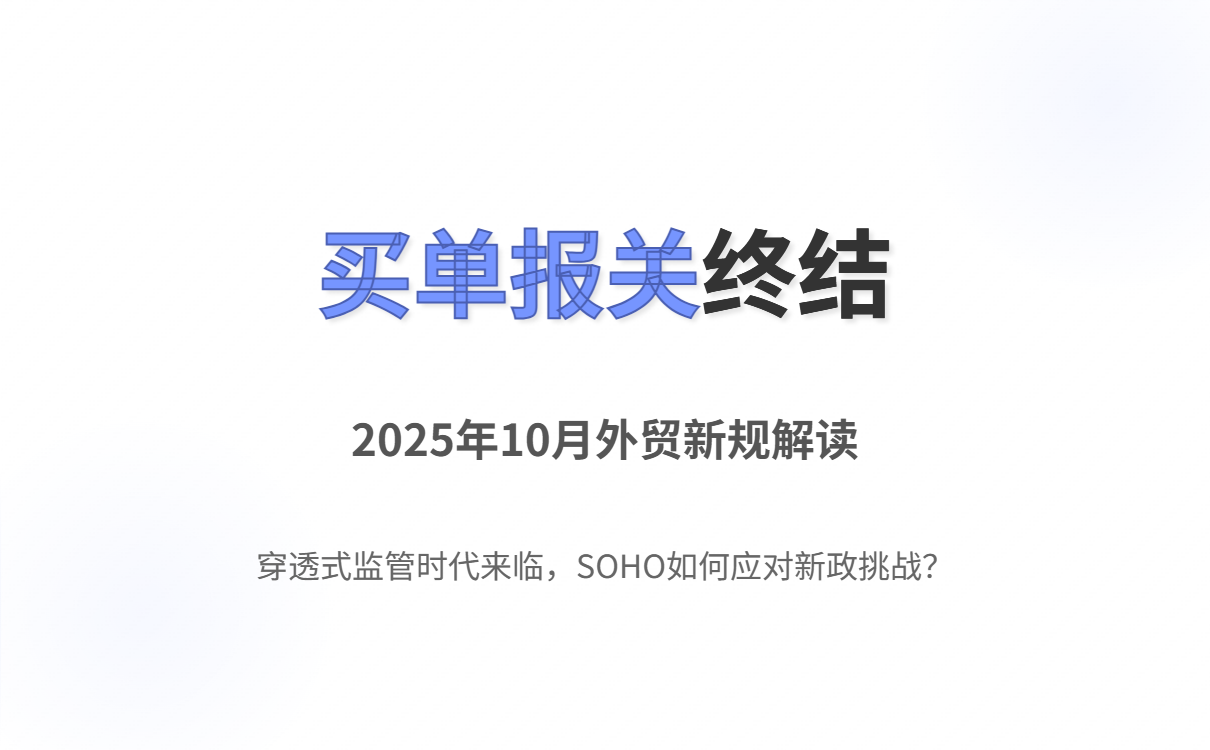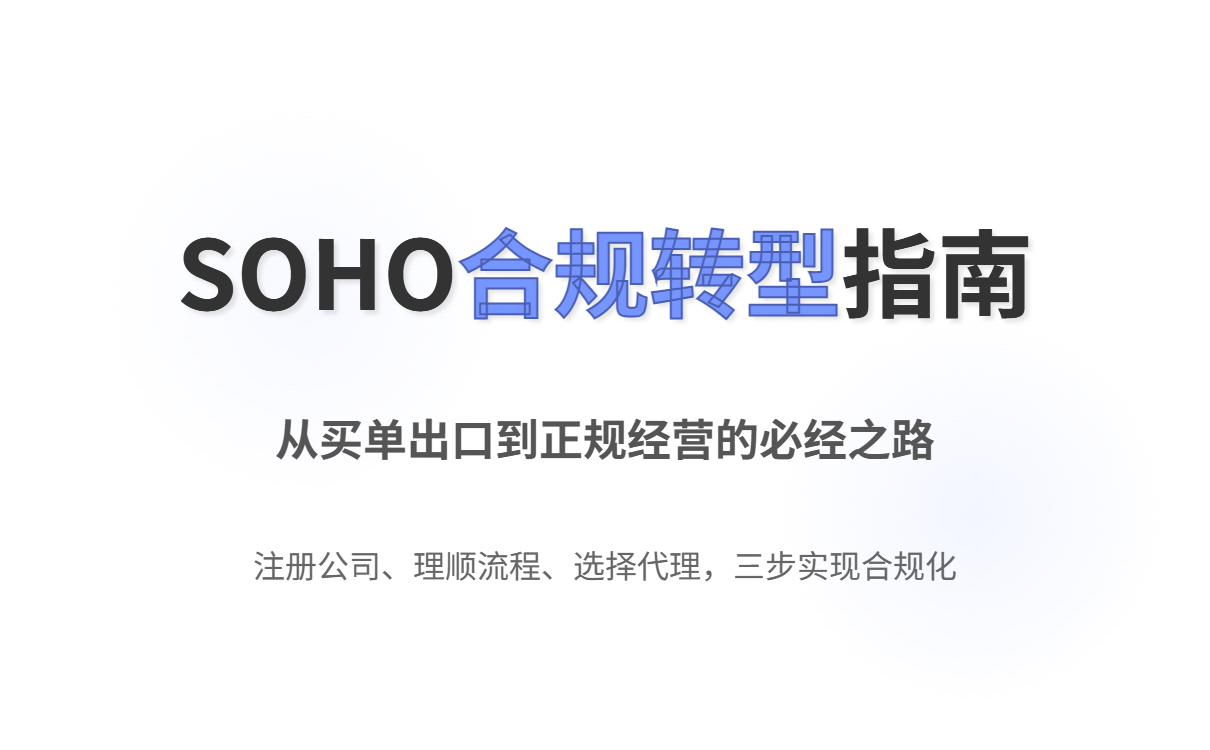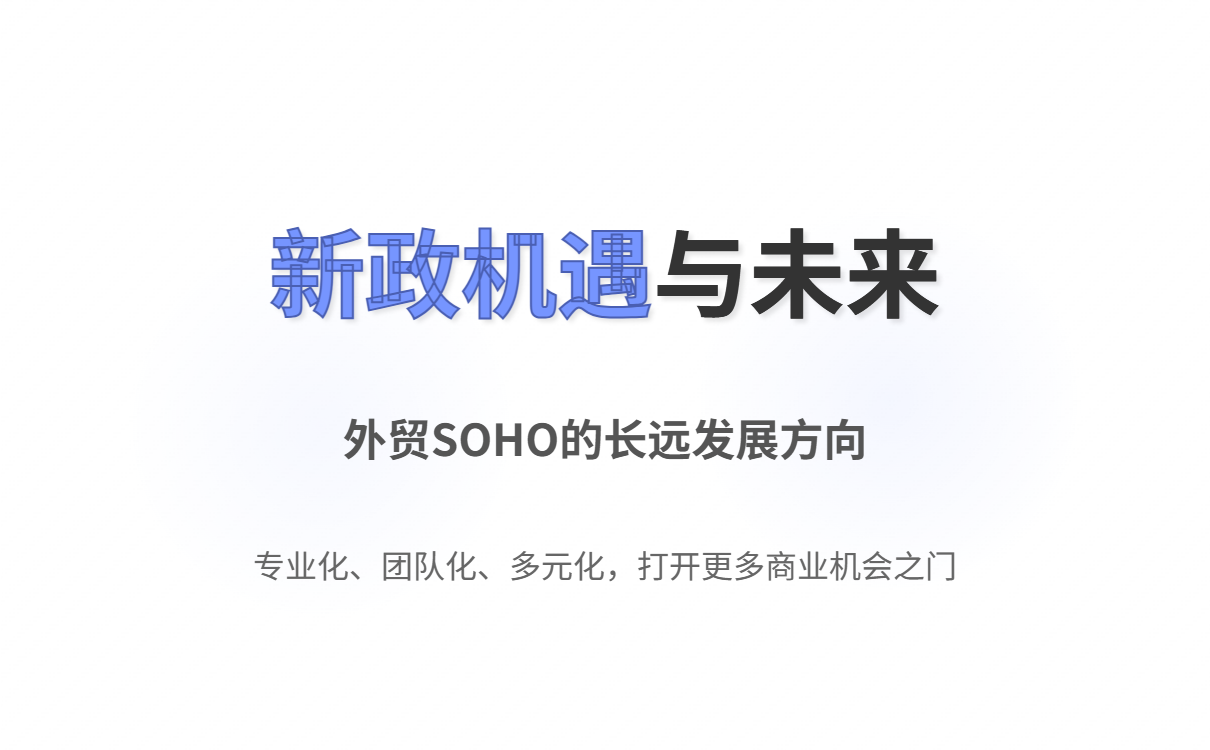
A sweeping change arrives on October 1, 2025. The State Taxation Administration’s 2025 Announcement No. 17 ends the era of “buy-on export” for many small operations, and ushers in penetrative, real-name, and traceable cross‑border trade governance. For SOHO exporters—solo entrepreneurs and micro‑firms—the shift isn’t just about compliance paperwork. It impacts cost structures, tax planning, contract practices, and even which markets remain viable.
This article translates the policy into practical steps for B2B marketers and risk-aware exporters. We outline why the policy matters to SOHO players, the core challenges you’ll face, and a concrete transformation roadmap—so you can win sustained business in a regime that rewards legitimacy, transparency, and scalable operations.

The appeal was clear for many small sellers: faster onboarding of customers, cheaper unit economics on certain product categories, and a flexible model that can scale quickly. The new policy challenges that model by removing the easy workaround and demanding verifiable ownership for every shipment.

Turning a purely import-through model into a compliant export business requires concrete steps. The goal is to minimize risk while preserving revenue streams from both existing and new customers.
Practical implementation hinges on a well‑documented internal control framework: standardized supplier contracts, purchase orders, VAT invoices, export declarations, and a dedicated account for foreign exchange receipts. The aim is to create a traceable, auditable export trail that buyers and financial partners trust.
| Action | What It Delivers | Suggested Timeline |
|---|---|---|
| Register a micro‑enterprise or company | Legal exposure limits; access to export licenses | 1–6 weeks |
| Establish contracts and VAT invoicing with suppliers | Auditable procurement trails; compliant tax treatment | 2–6 weeks |
| Set up export declarations under the company | Clear ownership; traceable customs data | 2–4 weeks |
| Engage compliant export services | Risk reduction; faster onboarding of buyers | ongoing |
Li Wei ran a Guangzhou daily consumer goods SOHO for three years. When the policy signal emerged, he registered a micro‑company and shifted operations to a compliant export model. The shift increased early-stage costs but boosted buyer confidence. He secured repeat orders from existing customers and began winning new distributors who require auditable supply chains. The numbers tell a story: the perceived cost of compliance softened as tax refunds for eligible product lines offset part of the additional expense, and the business gained access to brand partnerships that would have been unavailable under a proxy model.
Operationally, Li Wei rerouted procurement through verified suppliers, implemented formal purchase contracts with VAT invoices, and used the company bank account for foreign receipts. The result: a cleaner financial trail, easier access to banking facilities, and more favorable terms with key buyers who prefer reliable, compliant suppliers.
For buyers, a supplier with a legitimate export entity is more trustworthy, reducing payment risk and compliance concerns. For lenders and investors, a registered business with transparent records offers greater confidence and easier access to growth capital.

| Category | Details | Notes |
|---|---|---|
| Pre-policy proxy cost | Approximately 0.8% of export value | Varies by agent and service scope |
| Post-policy compliant cost | Estimated 1.5–2.0% (including VAT, invoicing, and agency fees) | Costs may decline with scale and tax refunds |
| Tax relief for micro businesses | VAT exemption for monthly sales below threshold; partial corporate income tax relief | Check local thresholds and eligibility annually |
| Risk profile | Higher if misreporting occurs; three-year traceability window | Maintain robust compliance records |
Ready to build a transparent, bankable export pipeline that attracts reliable buyers and easier financing? Let’s craft a practical compliance roadmap tailored to your product, markets, and risk tolerance.
.png?x-oss-process=image/resize,h_100,m_lfit/format,webp)
.png?x-oss-process=image/resize,h_100,m_lfit/format,webp)

.png?x-oss-process=image/resize,h_100,m_lfit/format,webp)
.png?x-oss-process=image/resize,h_100,m_lfit/format,webp)
.png?x-oss-process=image/resize,h_100,m_lfit/format,webp)
.png?x-oss-process=image/resize,h_100,m_lfit/format,webp)
